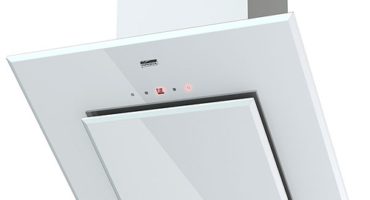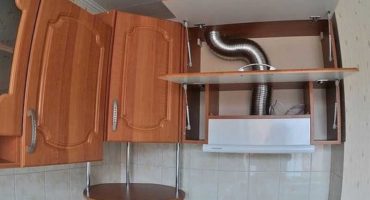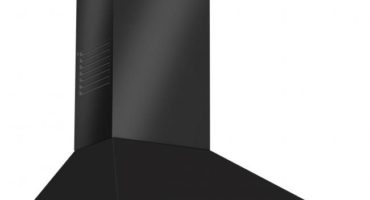An activated exhaust system is always accompanied by noise due to a running fan. And the more intense it spins, the louder the sound. No extractor hood can operate completely silently. The noise level of such household appliances is determined in the production process and immediately entered into a technical document. It is impossible to completely get rid of the sound, but it can be reduced. This article describes in detail all the noise levels of modern cooker hoodsThere are tips on how to reduce it.
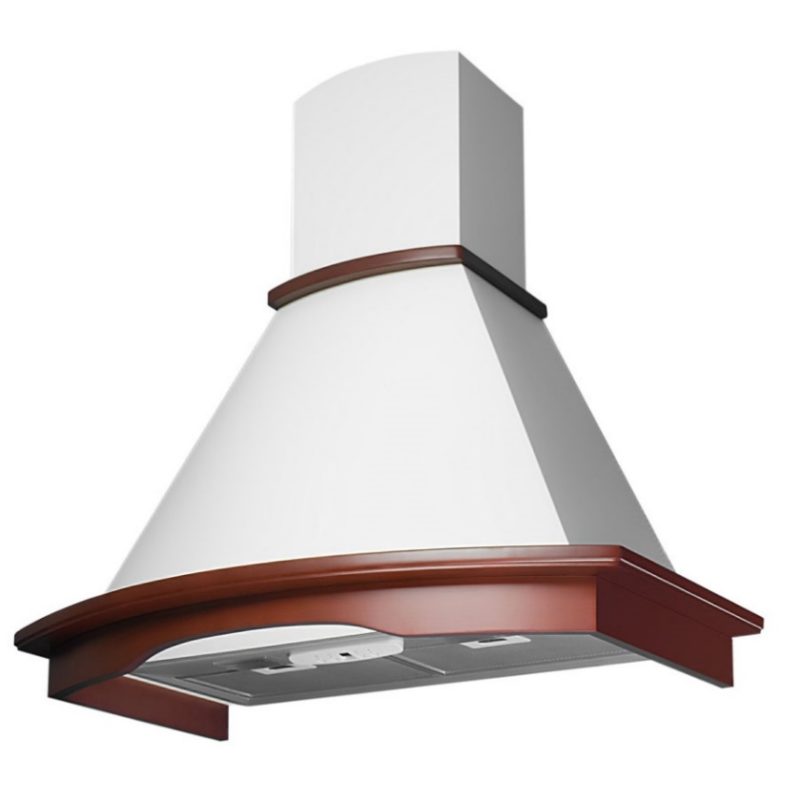
Cooker hood
Why are hoods noisy?
Since its inception, exhaust systems have become an indispensable attribute in every woman’s kitchen. However, after the acquisition and installation, many users are at a loss due to the strong sound that it makes. The following factors can affect this:
- In hoods with high power, the fan rotates much faster than in less efficient ones. This affects the speed of air passage through the duct, and the faster it is, the louder the noise.
- The size of the kitchen depends hood power. For large rooms, super-productive equipment is used.
- Through the duct with a small cross-section, the air flow will move faster, while making a loud sound.
- The presence of a large number of bends in the space from the hood to the ventilation complicates the path of the air flow. Because of this, its speed increases, which leads to loud noise.
- The presence of one or more transitions is an additional source of noise (the transition can be any: between different materials, section shapes or diameter).
- The load created by the hood depends on the length of the duct. The more it overloads, the stronger the speed will be.
- The corrugated duct channel creates more noise, but it can be reduced by reducing the number of bends or making them smooth. The plastic channel is much quieter due to the smooth walls.
- With a hood located above the standard distance, it will be necessary to work more and with increased speed to effectively eliminate dirty air. This will result in increased noise.
- If the exhaust system is made poorly and there is a gap somewhere, this will cause an extraneous sound.
- A poorly attached device to the wall and a movable duct lead to vibration during the operation of the hood and additional noise.
In addition to the above factors, during the operation of the hood, a loud sound can be created due to the plastic fan located close to the body. This is due to the fact that hot air rises from the stove, and because of this, the plastic blades are deformed and subsequently cling to the body. However, such a problem is extremely rare.
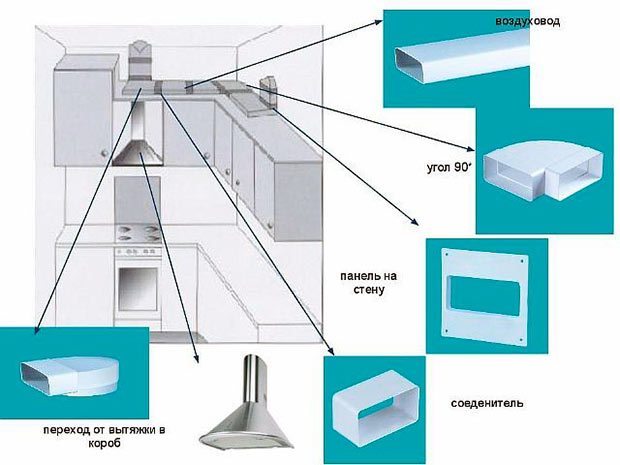
The structure of the hood
What noise can the exhaust system create?
In the course of their work, all hoods create extraneous sounds. If there is a rattling or vibrational effect, then this indicates the presence of play in some place, loose housing, duct or problem in another mechanism.
If the fins of the exhaust system are dirty, you will hear the fan is buzzing. Due to the narrow section in the duct, the air passes with greater speed and creates a hum. Since its engine is working when the hood is on, this process is also accompanied by a characteristic buzz.
Knowing all the sounds, you can understand by ear whether they are connected with a breakdown or not. Repair will be required in the following cases:
- When the sound sharply changed during operation (extraneous sounds appeared or noise was noticeably amplified). If the exhaust system has been installed for a long time and is regularly used in different modes, the change in sounds will become noticeable immediately.
- When extraneous noise appeared in the case, vibration and rattling. This may be due to backlash in the moving part.
- When the hood operates in normal mode without changing the sounds, but the air is not removed.
What are the noise levels?
Any hood model has a technical data sheet in which the manufacturer indicates the noise level being created. For all people, the auditory perception is different, and what is normal for one, for another it may seem loud. Examples of noise from life in decibels:
- Rustling leaves with a light wind - 10 dB.
- A conversation in a whisper between two people at a distance of one meter is 20-25 dB.
- The sound when ticking a wall clock at night is 30 dB.
- A conversation between two people with specially lowered voices is 35 dB.
- Normal and calm speech - 40 dB (this mark should be observed during the daytime with closed plastic windows).
- The sound generated during typing is 45-55 dB (such a sound can be heard clearly, and some may get on your nerves).
- A conversation in elevated tones between two people at a distance of 5 meters - 60-65 dB.
- The included vacuum cleaner, a busy street at rush hour, a loud screech - 70-80 dB (with a long finding of such noise, psychological discomfort and a buzz in the ears appear).
- The sound created by a passing motorcycle, road transport or subway cars is 80-90 dB (such a loud sound can lead to headaches, temporary hearing loss and irritability).
There are louder noise sources, but everything above 90 dB is dangerous to human hearing. The noise norm of average cooker hoods is 50-60 dB at maximum speed. And nothing depends on the width of the device itself. The noise level directly depends on the exhaust power. If its performance does not exceed 500 cubic meters, then the sound will be approximately 50 dB during operation. In models more powerful (from 600 to 1000 cubic meters per hour), the noise level will be 55-65 dB.
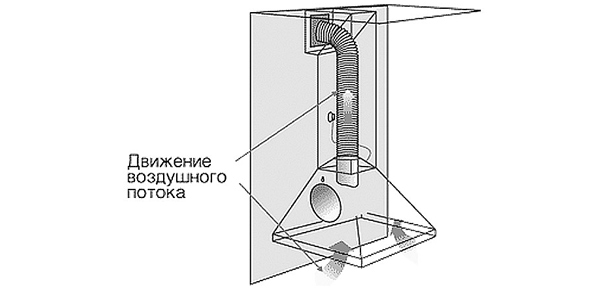
Airflow direction
If higher numbers are indicated in the technical passport, then you need to understand that being in the kitchen with the appliance turned on will be completely uncomfortable. However, given that the hood does not work for a long time at maximum speed, then no harm will be done to the human hearing.
How can I reduce exhaust noise?
To reduce the noise of the exhaust system, first of all, you need to check whether the housing is firmly attached to the wall or a special niche, since even a small gap causes additional noise and vibration.
If any, then they can be removed using foam rubber or polyurethane. You also need to make sure that all the fasteners are well-tightened, and place a thin isolon substrate in the vibrating surface.
It is recommended to choose such devices so that their power is enough with a margin. This will make it possible to turn on the hood not at the highest speed, at which the noise level is much less.
The material of the exhaust pipe or ventilation box also plays an important role. If the duct is made of plastic, then the noise level of the working hood will be quiet, and if it is made of corrugated metal, it will be loud. You can reduce noise by applying additional sound insulation. For this you need to stick soundproofing material to the duct. After that, the sound during operation of the hood will become much quieter.
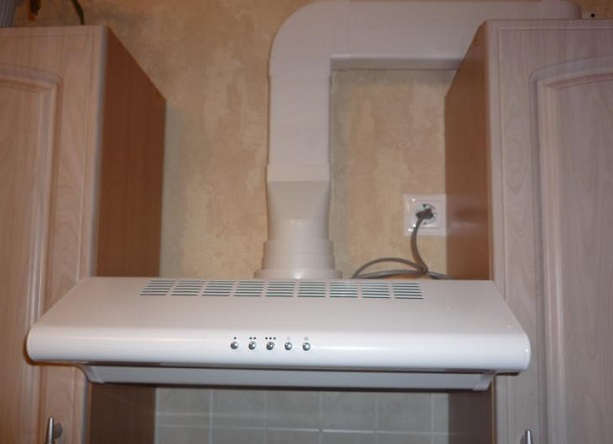
Hood with plastic duct
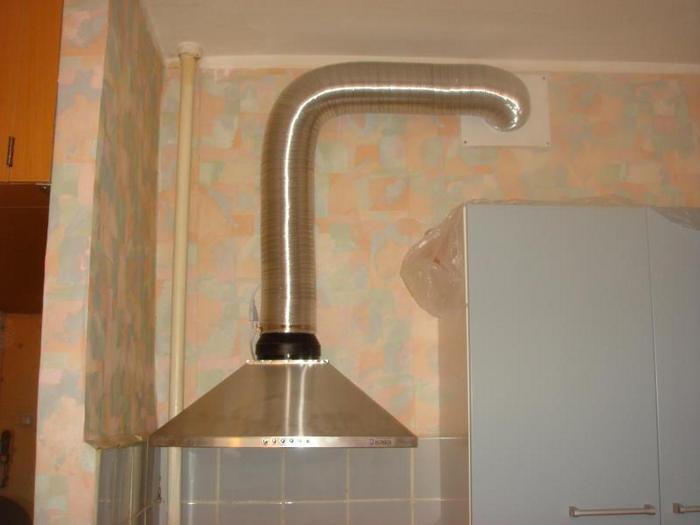
Corrugated exhaust hood
The main source of sound in a working range hood is the engine and fan. If a high noise parameter is indicated in the technical data sheet, then it will not work out by yourself. Therefore, it is important to pay attention to all the specifications before purchasing an exhaust system.
 Cooker hood: the freshness and comfort of a modern kitchen
Cooker hood: the freshness and comfort of a modern kitchen 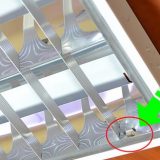 How to replace a light bulb in a hood
How to replace a light bulb in a hood 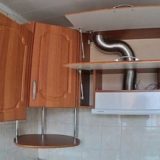 Installing and masking the corrugation on the hood - instructions and features
Installing and masking the corrugation on the hood - instructions and features 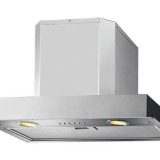 Best built-in hoods: ranking 2018-2019
Best built-in hoods: ranking 2018-2019 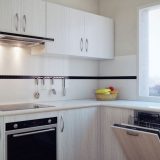 Overview: how to install the hood in the kitchen - the rules of preparation and installation
Overview: how to install the hood in the kitchen - the rules of preparation and installation 